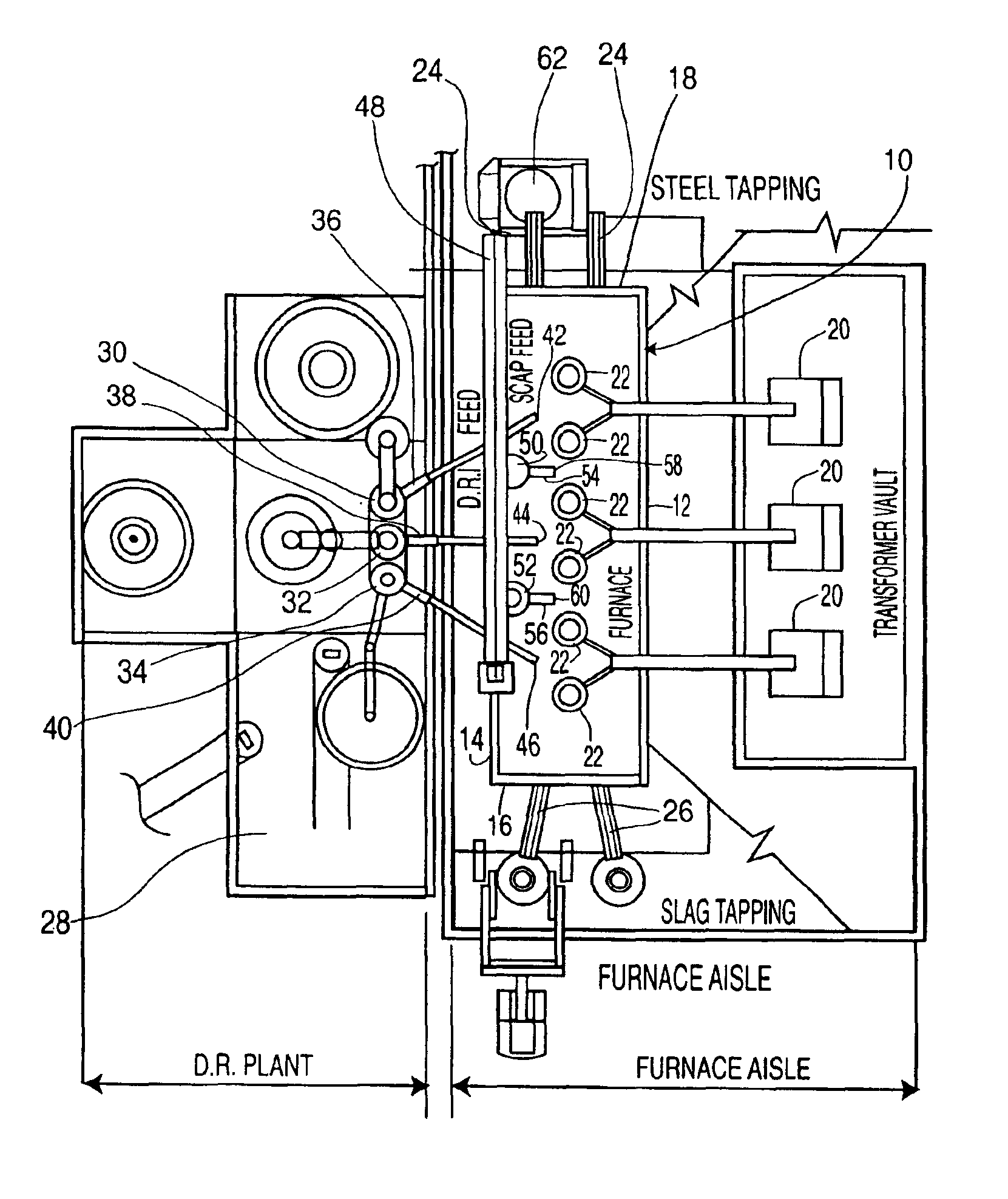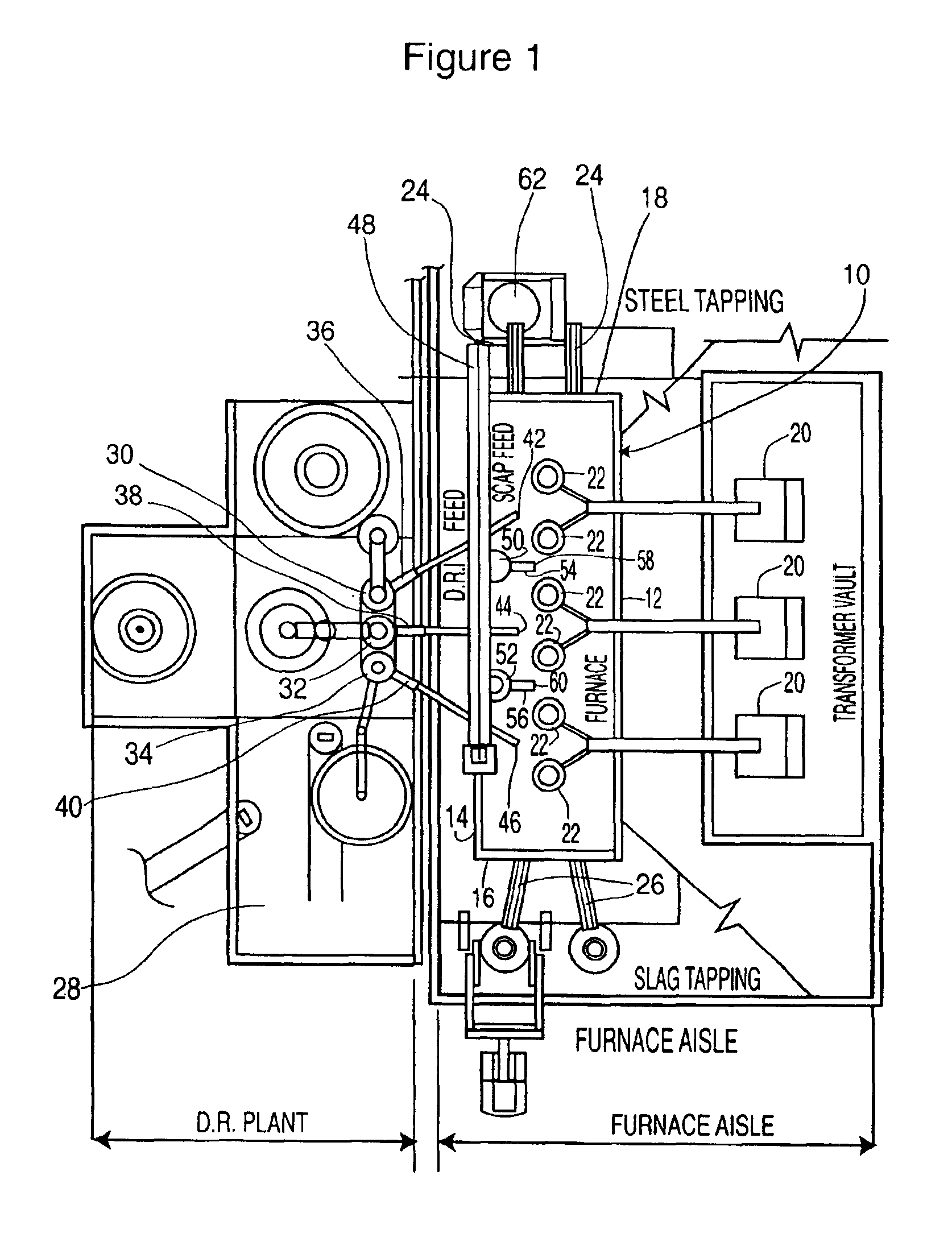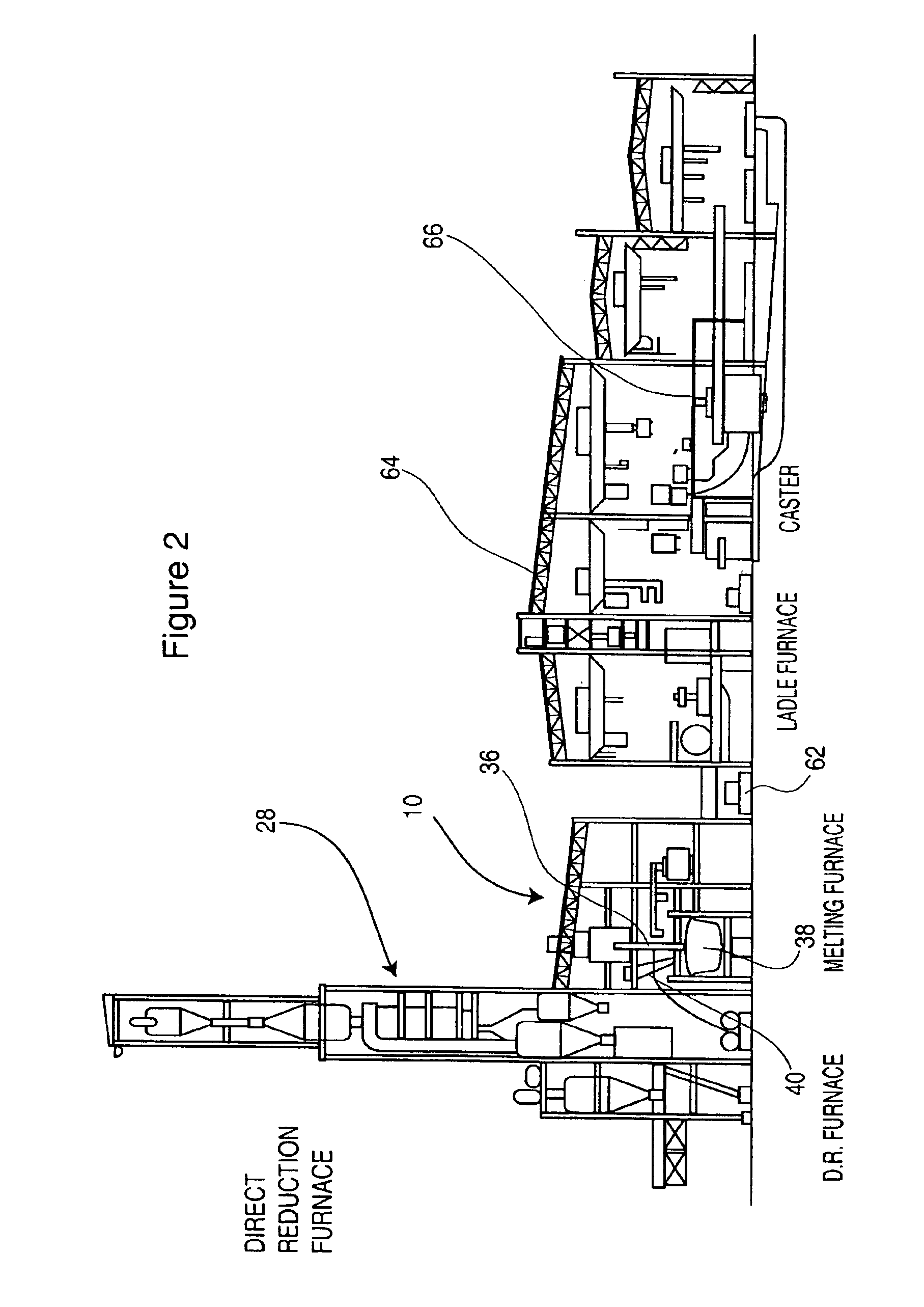Continuous steelmaking process
a steelmaking process and continuous technology, applied in the field of steelmaking, can solve the problems of high fluidity and high reactivity of slag according to this composition, no complete satisfactory results, and excessive wear of furnace refractory, so as to achieve low refractory wear, high melting slag composition, and high melting
- Summary
- Abstract
- Description
- Claims
- Application Information
AI Technical Summary
Benefits of technology
Problems solved by technology
Method used
Image
Examples
Embodiment Construction
The preferred embodiments of the invention will now be described below with reference to the use of a stationary six-electrode arc furnace 110 (also referred to herein as a “steelmaking furnace”) as a continuous melter. The use of this type of furnace is well established in the smelting of nickel and copper. Despite the references to this type of furnace in the prior art mentioned above, it is not typically used in the steel industry.
As shown in FIG. 1, the furnace 10 is preferably rectangular in shape, having side walls 12, 14 and end walls 16, 18. The furnace walls and hearth are lined with refractory brick (not shown) which is based on magnesium oxide. In a particularly preferred embodiment of the invention, the furnace may have dimensions of about 9×27 metres, sufficient to provide a relatively large bath size of about 7 to 13 tap volumes, more preferably about 10 tap volumes. The large bath provides a “flywheel” effect, enabling the periodic tapping of steel while continuing to...
PUM
| Property | Measurement | Unit |
|---|---|---|
| Temperature | aaaaa | aaaaa |
| Percent by mass | aaaaa | aaaaa |
| Percent by mass | aaaaa | aaaaa |
Abstract
Description
Claims
Application Information
 Login to View More
Login to View More - R&D
- Intellectual Property
- Life Sciences
- Materials
- Tech Scout
- Unparalleled Data Quality
- Higher Quality Content
- 60% Fewer Hallucinations
Browse by: Latest US Patents, China's latest patents, Technical Efficacy Thesaurus, Application Domain, Technology Topic, Popular Technical Reports.
© 2025 PatSnap. All rights reserved.Legal|Privacy policy|Modern Slavery Act Transparency Statement|Sitemap|About US| Contact US: help@patsnap.com



